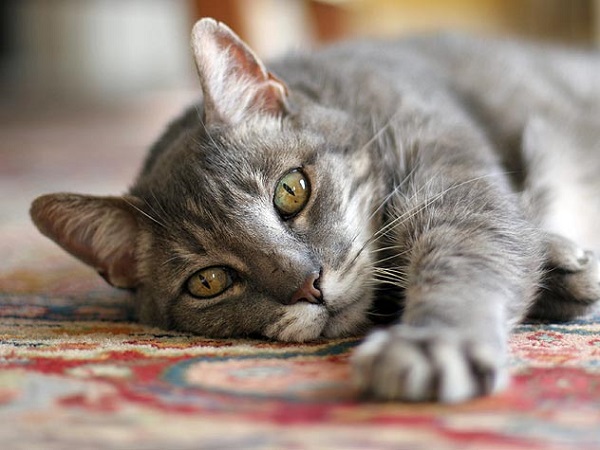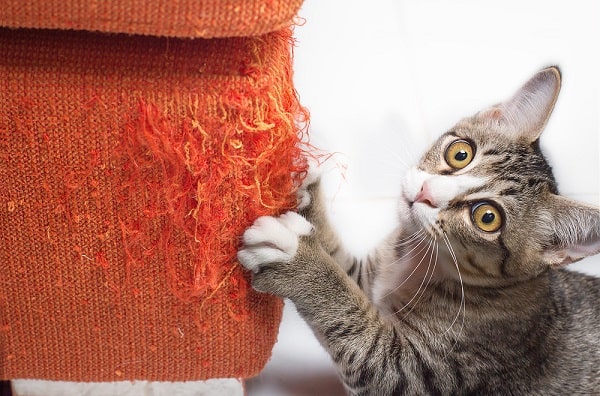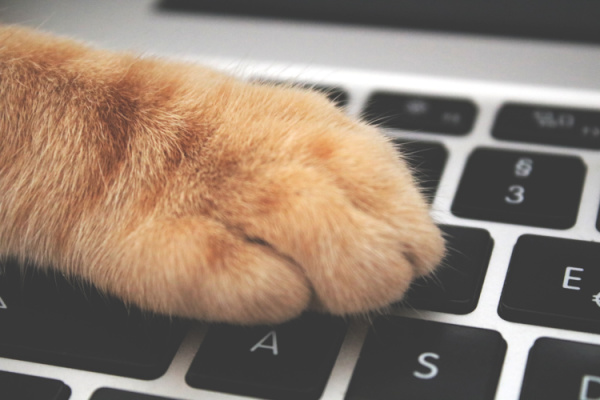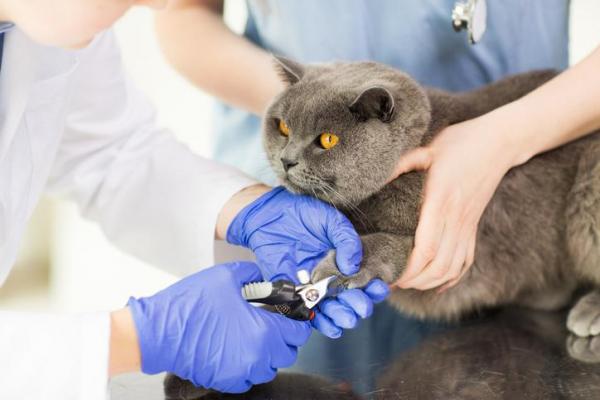Analyze the pros and cons of declawing your cat before taking the final decision! If you are a cat parent, you know how good your cat is at scratching up your furniture. Even if they are provided with suitable scratching posts, mats, and pads, but still and all, your kitty still ends up scratching across the furniture and sofa.
For some cat owners, this can be annoying, and they might settle on the only permanent solution — cat declawing, aka onychectomy.
And since you are a proud cat owner, you are just about as curious to find out the pros and cons of declawing your cat.

Advantages and Disadvantages of Declawing Cats
Cat declawing, also known as onychectomy, is a surgical amputation procedure of removing a cat’s claws. The main pro to cat declawing is that your cat can no longer scratch, which is advantageous if she is scratching people or your furniture. However, the cons of cat declawing can exceed the pros for the most part.
And before you decide on getting declawing surgery for your cat, you should know that the process involves both advantages and disadvantages.
Here are a few of them.
| Advantages | Disadvantages |
| Your Furniture Is Safe Now | Declawing Is Painful |
| Your Cat Is Now Harmless | Surgical Complications |
| May Improve Relationship | No Protection |
| Prevents Abandonment | Hard to Use the Litter Box |
| – | Cannot Be Reversed |
| – | Your Cat Is Still Aggressive |
Pros of Declawing Cats
Scratching is a normal cat behavior, American Veterinary Medical Association (AVMA) notes. It’s in their instincts to scratch on surfaces to take out excess claw material and keep the nails clean and in good shape.

While you may not like your cat scratching up all your furniture and other valuable belongings in the house, and nothing else seems to work, now you are thinking if declawing your cat is worth it. Well, yes, it is, to a certain extent.
However, a declawed cat can continue the scratching behaviors, but they no longer can cause any damage.
Additional pros of declawing your cat are mentioned below.
Your Furniture Is Safe Now
One of the prime benefits of declawing a cat can be the prevention of property damage. Without its claws, a cat cannot scratch and shred your belongings anymore.
And furniture — your cat’s favorite scratching place — is now safe. But for all cat owners, no one would like to come home and see scratched-up furniture. Cat pet owners report that their furniture often suffers because of this feline trait — scratching. The scratching behavior in cats is natural, however, it can be annoying sometimes.
But after a cat has been declawed, it can no longer scratch the valuable belongings in the house, including the furniture.
Your Cat Is Now Harmless
The cats that have had their claws surgically removed pose a much lesser risk to people and animals around them. Out of all reasons, most cat owners take this one into account before deciding to declaw their cats.

Declawing a cat can also protect children if they want to play with cats. In case the cat gets aggressive, it could scratch a kid. Moreover, if you are afraid of getting scratched by your cat, then this procedure can help you with that case.
Declawing your cat can be necessary if your cat’s scratching behavior sources an unacceptable risk of injury or remains destructive in spite of constant attention to behavioral modification and alternatives.
May Improve Relationship
Your cat is no longer harmless after it has been declawed. This, in return, can better the home life and the relationship with the people in your home.
Since the cat no longer carries the risk of scratching you, family members in your home will be able to feel a closer bond with a pet that they are not afraid of. Plus, most normal functions remain unchanged for your cat, such as walking, jumping, climbing.
Prevents Abandonment
Scratching can be so bothersome for some cat owners that they are willing to abandon the cat in cat shelters. This is often due to the cat’s aggression that makes it seem to co-exist with its owners a difficult thing.
And the result is often abandonment or euthanasia, which may be prevented by declawing the cat.
Cons of Declawing Cats
For many cat parents, their cat’s natural urge to scratch can become an irksome problem. And this may leave them with only one permanent solution — declawing. Although it may look like a logical solution, it can, however, be a dreadful situation for your furry pal.

In fact, the possible problems caused by the declawing procedure can be seriously harmful to your cat’s life, as it’s not a simple trimming of the cat’s nails. Moreover, declawing a cat goes beyond a cat’s natural behaviors and instincts, which is not entirely appropriate.
Below are several cons of declawing your cat.
Declawing Is Painful
Since declawing your cat is carried out surgically, this process can be painful to your cat. Moreover, cats are good at hiding signs of discomfort and pain, so they may be uncomfortable for several years without you knowing.
Likewise, you must monitor mobility for changes in the cat’s gait or any obvious signs of discomfort, as cats who have their claws removed can be more susceptible to degenerative joint disease and arthritis, particularly as age.
Furthermore, this procedure has no medical benefit for your cat. In fact, your cat will lose the ability to scratching, which she needs for stretching her muscles and tendons. Which, in return, hinders her from staying healthy. Overall, declawing is an unpleasant experience for the cat itself, in spite of suitable pain medications.
Surgical Complications
Not just declawing, but all kinds of surgical procedures come with a slight risk. As for onychectomy (declawing), long-term complications usually follow along. This can include — claw regrowth, lameness, long-term pain, sore paws, flexor tendon contraction, and increased biting.
Likewise, there is also a risk of infection, which can put your cat in a bad situation. If the surgical nail cutter was dull, and since cats’ claws are brittle, a lot of cats may experience broken bones in their feet that can get seriously infected. And this can only be treated with a second general anesthetic and surgical process.
In other instances, if the entire nail bed, which is connected with the toe bones, is not taken out during the surgery, then one or more claws can re-grow at a later stage in life.
No Protection
Declawing your cat puts her in a vulnerable position, this can be especially unsafe for outdoor cats. If it is an indoor cat and were to escape and to have to live by itself, chances are it probably won’t survive. This is because the felines use their claws as they help them maintain their footing on slippery surfaces.

Claws also help when cats need to defend themselves from predators or sharpen their claws. It helps cats to hold onto things. Moreover, declawed cats won’t be able to play like they used to before.
Hard to Use the Litter Box
It is often reported that declawed cats have a hard time using the litter box. Cats may show the pain they feel in their paws when they want to cover their waste with the litter box itself.
Instead, cats lookout for a less distressing spot for excretion, which can be the carpet or bathtub or even on the bed. Despite effective ways available to modify your cat’s litter box behavior, it remains a tough challenge due to a declawed cat’s aversion comes from pain.
Cannot Be Reversed
Another thing with declawing is that it cannot be undone. It might hurt your kitty when she walks, and nothing can be done to reverse this situation. Unfortunately, declawing surgery cannot replace the claws of your cat.
Furthermore, declawed cats will never have a complete, regular function of a normal feline with intact claws, and a long period of unusual function may have brought irreversible arthritic modification in their joints.
Your Cat Is Still Aggressive
If you thought of declawing your cat to resolve the issues related to aggression, then forget about it. The only leading practical outcome of declawing your cat can be the prevention of the destruction of property. The declawing procedure will not address any issues related to aggression, which caused them to scratch too much.
Declawing cats will just make them unable to quench their natural itch of scratching, which can be dreadful for them.
Bottom Line
As you can see, there are pros and cons of declawing your cat, and the one who can make the right decision for your cat is, indeed, you. Considering that this situation can be unique for everyone, you can make the choice based on your personal ideas and condition.
There are also ways you can train your cat or kitten to scratch in a more suitable place, such as a scratching post, or even you can get nail caps for your cat.
However, if you think the pros outweigh the cons of declawing your cat for your specific situation, only then you should decide on getting surgery for your cat. We only want the best for your furry pal!
References
- Effects of declawing in felines — National Library of Medicine
- Declawing cats: Far worse than a manicure – The Humane Society of the United States
- Welfare Implications of Declawing of Domestic Cats – AVMA

